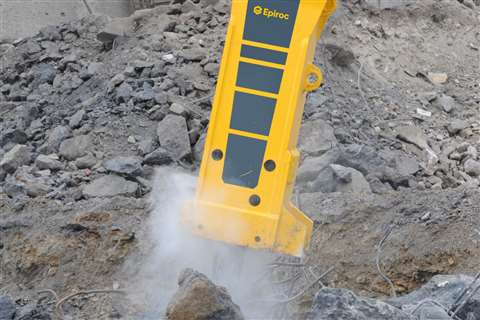Epiroc combines familiar features
15 February 2018
Hydraulic attachment tool specialist Epiroc has announced that many of its rig mounted heavy hydraulic breakers now feature the patented Intelligent Protection System (IPS).
Combining the AutoControl and StartSelect functions, the Germany-based company claims it is a “world first” in hydraulic breaker technology.

Epiroc HB 2000, HB 2500, HB 3100, HB 3600 and HB 4700 are now equipped with IPS, with other heavy hydraulic breakers in the range following later in the year.
AutoControl and StartSelect have been features of Epiroc’s hydraulic breakers for several years.
AutoControl optimises breaker performance by automatically adjusting the piston stroke length, while the StartSelect system offers manual switching between two modes, AutoStart and AutoStop.
Now the functions have been combined in the IPS.
This ensures that the hydraulic breaker always starts in the AutoStart mode. When the contact pressure between chisel and material increases and AutoControl switches from a short piston stroke to a long piston stroke IPS switches automatically to the AutoStop mode. When the chisel breaks through the material the breaker automatically shuts off and prevents blank firing.
IPS makes the breaking process simpler for the operator by automatically adapting the breaker’s operating behavior to any working condition. Uptime is higher because, with its fully automated functionality, IPS requires no operator intervention or reaction and thus there is no interruption of the working process.
